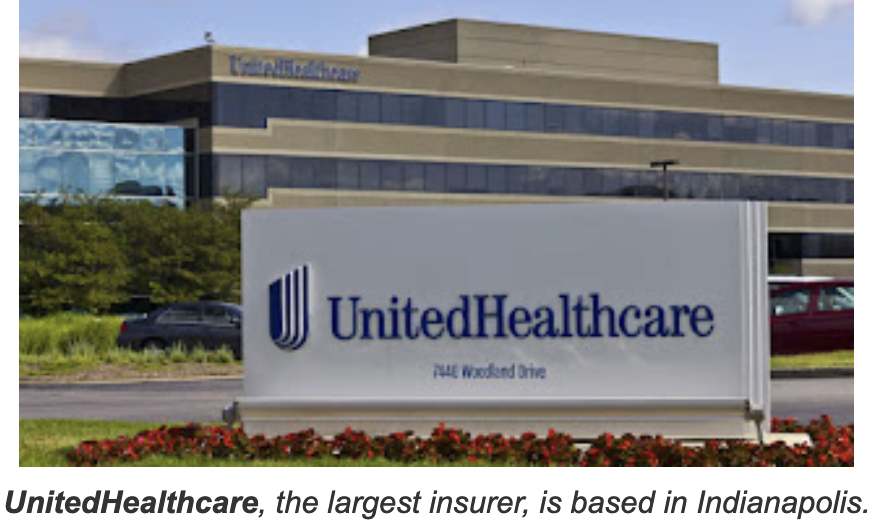Health insurers, drug companies and other middlemen account for 45% of America’s huge health-care bill, up from 25% in 2013

Kentucky Health News
Americans spend $4.3 trillion a year looking after their health. That is 17% of the nation’s gross domestic product, “twice as much as the average in other rich economies, and yet, American adults live shorter lives and American infants die more often than in similarly affluent places,” The Economist reports. “Pharmaceutical firms and hospitals attract much of the public ire for the inflated costs. Much less attention is paid to a small number of middlemen who extract far bigger rents from the system’s complexity.”
These are the for-profit health-insurance companies, pharmacies, drug distributors and pharmacy-benefit managers (PBMs), which The Economist dubs “Big Health.” They account for about 45% of our health-care bill, “up from 25% in 2013,” the British-based magazine reports. “Big Health accounts for eight of the top 25 companies by revenue in the S&P 500 index of America’s leading stocks, compared with four for Big Tech and none for Big Pharma.”
The largest private health insurer, UnitedHealth Group, took in $324 billion last year, behind only Walmart, Amazon, Apple and ExxonMobil, “and $25 billion in pre-tax profit,” The Economist notes. “Four pharmacy giants generate 60% of America’s drug-dispensing revenues. The mightiest of them, CVS Health, alone made up a quarter of all pharmacy sales. Just three PBMs handled 80% of all prescription claims. And a whopping 92% of all drugs flow through three wholesalers.” Kentucky has reined in PBMs, now using only one for Medicaid and using the savings to expand the program.
The Patient Protection and Affordable Care Act of 2010 limited health insurers’ profits “to between 15% and 20% of collected premiums, depending on the size of the health plan, but it imposed no restrictions on what physicians or other intermediaries can earn,” so that “created an incentive for insurers to acquire clinics, pharmacies and the like, and to steer customers to them rather than rival providers,” The Economist explains. “The strategy channels revenue from the profit-capped insurance business to uncapped subsidiaries, which in theory could allow insurers to keep more of the premiums paid by patients. . . . Between 2013 and August 2023 the nine health-care giants spent around $325 billion on over 130 mergers and acquisitions.”
These businesses “say that bringing all parts of patient care—primary-care clinics, pharmacy services, pbms and insurance—under one roof is beneficial for all. In the old fee-for-service model, big health argues, doctors or hospitals are paid for each service they provide, encouraging them to perform as many as possible and charge as much as they can. If doctors and insurance companies are part of the same business, by contrast, incentives should be aligned and overall costs should be lower,” The Economist reports.
“That, at least, is the theory. And there is some truth to it, [but] vertical integration can have adverse side effects. For example, many studies have found that after hospitals acquire physician practices, prices increase but quality of care does not. A health-care company that controls many aspects of patient care could raise prices for rivals wishing to access its network. Some also worry about physicians being nudged towards offering the cheapest treatment to patients, lowering the quality of care.”